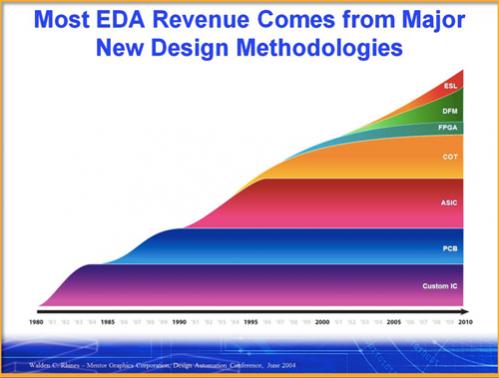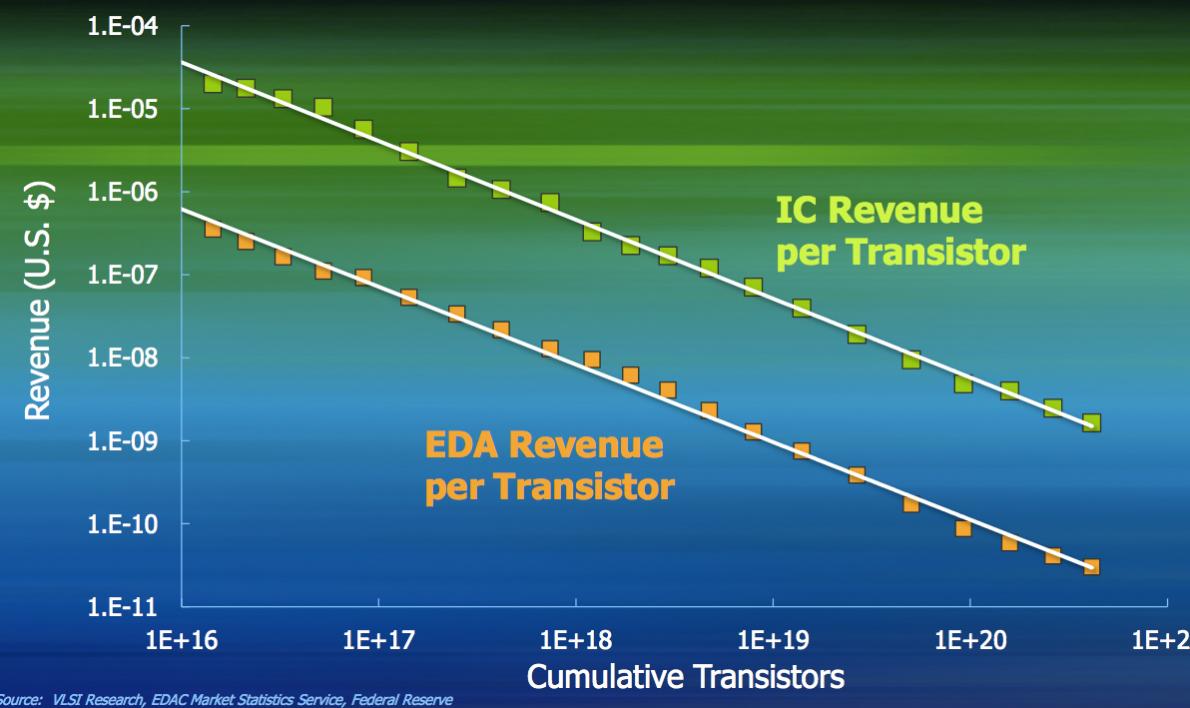 Wally Rhines gave the keynote at DAC in 2004. One of the things that he pointed out ten years ago was that EDA revenue for any given market segment is pretty much flat once the initial growth phase has taken place and the market has been established. Incremental EDA revenue only comes from delivering new capabilities. Historically these have largely been in new area.
Wally Rhines gave the keynote at DAC in 2004. One of the things that he pointed out ten years ago was that EDA revenue for any given market segment is pretty much flat once the initial growth phase has taken place and the market has been established. Incremental EDA revenue only comes from delivering new capabilities. Historically these have largely been in new area.
EDA started with custom layout, then added PCB, then ASIC, then COT and so on. Each new market grew EDA but the older markets remained flat. For example PCB revenue grew to a certain size and has remained pretty much that size every since.
At DAC this year Wally presented an update ten years on as where the current and future growth areas for EDA are.

Traditional EDA is flat and over the 2001-2013 period, the growth has all come from new areas: DFM has had a CAGR of 27% over the period, ESL of 11%, formal 10%, emulation 6% and so on. These new areas have risen from a relatively small base in 2001 and are now on their own represent $1.5B of revenue to put on top of the nearly $3B of traditional EDA.

Increasingly the incremental EDA revenue is not coming from completely new markets but from adding completely new capabilities to the traditional tools. So front end design has been flat but adding ESL, formal, power, signal integrity and emulation has led to a CAGR of 9.2% for front end over the last few years compared to 3.1% over the whole 2001-2013 period.
There are new challenges and new opportunities at 10/7/5nm: FinFETs require tools to deal with process complexity, thermal and stress. The lack of EUV requires capabilities to handle directed self-alignment, double and triple patterning and density balancing. These will be one basis for growth in the next few years.

Historically, EDA semiconductor revenue per transistor and EDA revenue per transistor have decreased at around 30% per year. The first is simply Moore’s law and the second reflects EDA revenue having been 2% of semiconductor revenue for at least 20 years. One big question, of course, is whether this will continue or whether the graphs we have all seen showing cost per transistor increasing reflect our future.
The basic thesis is that EDA grows from solving new problems. Some of these problems are in existing EDA markets, with incremental capability like ESL or formal. Some come from supplying traditional tools but into new markets, such as selling RET capability to foundries (who historically have not had enormous EDA budgets) or selling emulation to software developers. And some from new markets such as embedded software, cyber-security or automotive subsystems. Although the term is overhyped right now, this is growth from the internet of things, which will require security, embedded software, wireless communication, subsystems and more.

So with all of these things, new capabilities, access to new budgets, completely new markets, then Wally believes that the future of EDA is rosy. After all, given that EDA only grows from solving new problems, the fact that there are plenty of new problems is a driver for the whole EDA industry.
Wally’s full presentation is HERE.
More articles by Paul McLellan…







Comments
0 Replies to “Wally Rhines at #51DAC: EDA Grows From Solving New Problems”
You must register or log in to view/post comments.